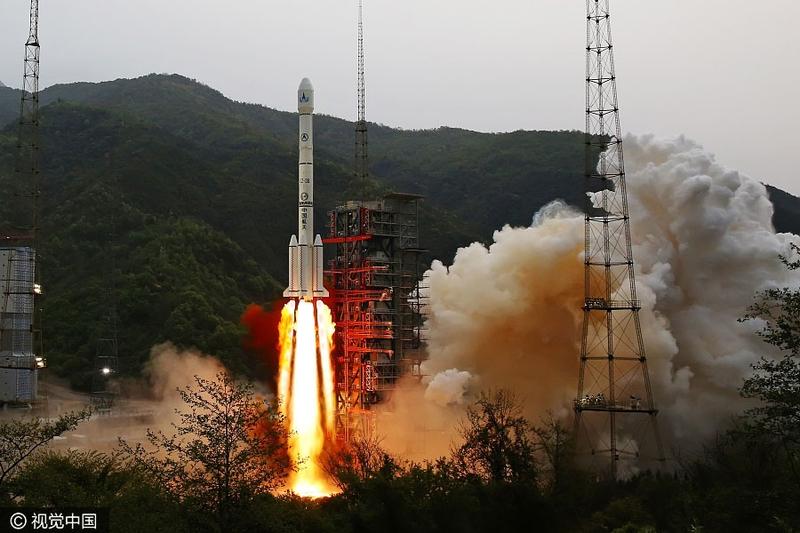 Shijian 13, China's most advanced communications satellite, is launched at the Xichang Satellite Launch Center in Sichuan province on Wednesday. (PHOTO / VCG)
Shijian 13, China's most advanced communications satellite, is launched at the Xichang Satellite Launch Center in Sichuan province on Wednesday. (PHOTO / VCG)
China's biggest, heaviest and most advanced satellite has completed all of its major technology demonstrations and verifications, a testament to the efficient design of the country's new-generation satellite platform, the DFH 5, according to the China Academy of Space Technology.
Shijian 20, a technology demonstration satellite developed by the Beijing-based academy, is tasked with conducting 84 in-orbit tests and experiments. As of now, all the major tests have been completed with "satisfactory results", the academy said in a statement.
The finished tasks included the first orbital demonstrations for ultra-high-capacity communications, ultra-high-speed laser communications, electric propulsion and other advanced technologies
The finished tasks included the first orbital demonstrations for ultra-high-capacity communications, ultra-high-speed laser communications, electric propulsion and other advanced technologies.
READ MORE: China soars ahead with space missions
The results displayed the reliability and capability of the DFH 5 platform and proved the efficiency of several key space-based technologies and new equipment, the statement said, adding that the satellite will continue to conduct other tests and experiments.
Shijian 20 was lifted by a Long March 5 carrier rocket at the Wenchang Space Launch Center in Hainan province on Dec 27 and reached its preset position in a geosynchronous orbit about 36,000 kilometers above the Earth in early January.
With a designed life span of 16 years, it is the second satellite based on the DFH 5 after the Shijian 18 was lost during the Long March 5's ill-fated second flight in July 2017.
With a liftoff weight of more than 8 metric tons, the satellite carries more than 10 world-class technological payloads and is equipped with the country's largest, longest and most sophisticated solar arrays.
ALSO READ: China: Roaring Long March 5 thunders satellite into space
Li Feng, chief designer of the Shijian 20, said that some of the tests and experiments are cutting-edge and strategically significant, and their results will be useful in the research and development of next-generation space technologies.
The results displayed the reliability and capability of the DFH 5 platform and proved the efficiency of several key space-based technologies and new equipment
Wang Mian, a satellite designer at the academy, explained that the ultra-high-speed laser communications technologies feature superfast data transmission, high security and good anti-electromagnetic interference capability. The in-orbit experiments for the next-generation technologies laid a solid foundation for China to build space-based high-speed communication and internet networks.
The electric propulsion technology also has huge potential in the space industry because it enables spacecraft to save a lot of space used by fuel storage and give that space to mission payloads.
Consequently, the weight of the satellite can be substantially decreased, so a rocket can send two satellites into orbit at the same time, or a launch contractor can use a smaller rocket to carry the satellite, which will greatly reduce launch costs, designers said.
Zhou Zhicheng, chief engineer at the China Academy of Space Technology and project manager of Shijian 20, said that compared with DFH 5's predecessors, the new platform features a larger carrying capacity, higher transmission capability and longer life span and will better serve the needs of high-capacity satellites over the next 20 years.
Hao Yanyan, a supervisor in the Shijian 20 program, said each DFH 5-based satellite is three times stronger than those developed on its most recent predecessor, DFH 4, in regards to operational capacity.



